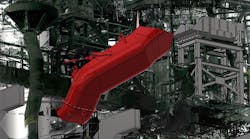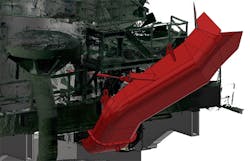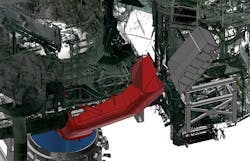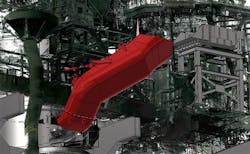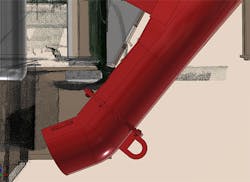Everyone has heard the saying “work smarter, not harder.” The need to do more with less has only become more prominent in recent years, with project teams finding it increasingly necessary to stretch budgets and deliver quickly.
Laser scanning is a primary solution for budget optimization. Even in projects where the financials are less critical, laser scanning emerges as a desirable solution that makes planning and pre-construction easier and faster.
As laser scanning technology becomes mainstreamed today, companies are exploring future opportunities for automation and miniaturization of devices that could be worn by plant workers.
With laser scanning technology in place, algorithms comparing point cloud data and documenting changes could be delivered to procurement in as-built form. With such innovations afoot, industry professionals are analyzing how work is performed today as they plan for a future that incorporates the full benefit of laser scanning potential.
Here are insights for success.
An Integral Tool
The incorporation of laser scanning into construction projects is vital, and can even be considered urgent in today’s marketplace.
Project teams have a very small margin of error to achieve defined objectives and there are significant financial repercussions for both the project and stakeholders when goals are not met. Decision makers are looking for any opportunity to cut costs and crunching the project schedule is a key way to accomplish that aim. Reducing the project timeline – in some cases, even by one day – can result in significant savings.
Data management is pivotal to this movement to streamline project execution. The ability to collect and quantify data and recall pertinent information quickly affects all facets of the project. Safety management, for example, becomes much more efficient when the crew can acquire data in two to three days, rather than sending a team of six to seven people into the field for two weeks to conduct an assessment.
Availability of equipment-related data is another benefit. Teams can scan a piece of equipment and reverse-engineer it, comparing the new with the old to understand the variations before the machine is even turned on, making it easier to conduct process-related planning early in the project.
Another major source of cost and schedule savings occurs when companies can handle tasks internally rather than outsourcing them. For example, 3D printing allows mass production of rendered designs whenever necessary without involving an outside party. This technology also enhances self-sufficiency, allowing companies to manufacture the tools needed to make repairs based on the material type.
This is especially useful in more remote areas or specialized industries where parts can have long lead times. This solution is even used on the international space station, where total self-sufficiency for maintenance is of the utmost importance. Such advanced technological solutions are at the forefront of market trends such as industry 4.0 and are gaining ground as these concepts take hold.
Innovative Solutions
With more agile solutions that are customized to each company’s individual needs, the number of different uses for the augmented data has substantially increased.
In one example, a facility had a 50-year-old piece of equipment that needed to be shipped to a new facility. Because stakeholders had no drawings for the equipment, the project team decided to scan it before shipment to save time in the field trying to redraw it. This also helped coordinate how to move the piece of equipment in the new facility, break apart the equipment for shipping, and document how it would be re-assembled in the new facility. Another information-based example demonstrated how laser scanning was used in a forensic way to determine that structural damage to a column had happened several years prior.
Another project team came up with the practical application of using laser scanning to examine crane rail in a steel mill. This was more efficient than having a surveyor take shots every 25 feet over a quarter mile. What might have taken nearly a week in the past was completed in a single day via laser scanning. This was especially important because the process required a work stoppage and the laser scanning solution helped avoid several days of downtime.
In addition to saving time and money, laser scanning can improve project team relations through effective communication.
Consider another example. An office renovation project in an industrial building sought to relocate workspaces. The drawings available for the renovation were out of date and inaccurate. There were utilities, ramps, and elevation changes that, because of a manhole in the building with unknown connections, were unaccounted for. The team documented these variations to illuminate the costs of various solutions and inform decision making. The data from the scans proved invaluable in critical communication with decision-makers on the project.
In another case, a steel mill was designing a chute to move material into the ladle for the steel. There were issues with the placement of the chute when the furnace tilted or rocked out of position. The team scanned it in multiple positions and saw clearance issues with the chute and its location in a tight, complex area.
With scanning technology, they discovered that their original proposal would not have worked in the space and were able to use the design model to explain the problem and solution to the client in detail. This due diligence saved owners from investing in an $80,000 solution that would have been ineffective. Not only did this effort build trust between the design team and the owner, but it also resulted in a better design for the client thanks to the accurate information provided by the model.
The following images demonstrate the integration of an SSOE self-performed site scan (reality capture) into the concept development effort of an Alloy Charging System for an existing steel melt shop arc furnace. This effort required a 3D design of a charging chute that would optimize the charging slope throughout the furnace’s tapping process. The chute’s mounting system required a robust design that would align with the tight clearances associated with the existing furnace structure and allow for the accommodation of the thermal expansion associated with the furnace function. At the same time, the design had to be installable in a very tight outage window with minimal impact to the furnace proper. Many of the clearances were less than 2 inches. The reality capture and 3D model integration proved to be the ideal solution. The installation went exactly as planned and the client has continued to embrace the value of the effort as part of their ongoing operations and future capacity increase plans.
Critical Expertise
With so many points in its favor, laser scanning is the new face of efficiency for companies in a variety of industries.
It saves time for projects, streamlining processes and organizing data more effectively for later use.
Practice makes perfect in optimizing the functionality of laser scanning, so the more expertise within the team, the better the improvements will be, and experienced teams know what to watch out for. Verification for the fit of equipment, tracking of maintenance and assets, and construction sequencing, are key areas where experience is required to flesh out the nuances of the project.
Effective planning bodes well for complex preconstruction situations. In a recent scenario, a facility had 1.5 million square feet of manufacturing and industrial space, a roof, and the exterior to cover in five weeks.
The project team used multiple devices to scan in real time and transfer the data back each week for assessments, allowing design and preconstruction activities to be completed in-house and keeping the project on schedule despite challenges. Because the team knew how to leverage the technology in a way that optimized its capabilities and customized its use to the needs of the project, they were able to meet the very challenging demands of the project.
The combination of expertise and technology allows project teams to achieve things that were never possible in the past. Ingenuity, self-sufficiency, adaptability, and innovation are all part of the formula for increased project and operational efficiency – achieved through ingenious innovations for scanning – that will dominate the future of the industry.










